…but the only area that showed growth was graphic novel sales.
ALSO: Graphic novel sales beat periodical sales, $590 million to $405 million.
So please take that “periodicals are ruling comics!!!!!’ talk else where.
That’s the number from the annual joint Comichron/ICv2 report on the State of the Industry. According to their release (emphasis mine):
Total comics and graphic novel sales to consumers in the U.S. and Canada reached $1.085 billion in 2016, a $55 million increase over sales in 2015.
“It’s gratifying to see continued growth in the audience for graphic novels,” Griepp said. “This represents growth in the broadest part of the market, where increased variety of content is being found by new audiences for comics, including kids and women.”
“Marvel’s lucrative relaunch of the Star Wars line in 2015 set a high mark for the comics shop market to beat in 2016,” Miller said. “The fact that it pulled even, thanks in part to DC’s ‘Rebirth’ event, was remarkable—and the book channel’s strength was even more so.”
Graphic novels in the book channel were the only area of growth in 2016, as sales in comic stores, through download-to-own digital channels, and in newsstands remained flat. Sales of graphic novels through the book channel grew 16% to $405 million in 2016, after growing 23% in 2015 and 16% in 2014.
As presented above and in the accompanying infographics, the analysis by Comichron and ICv2 was divided up between periodical comics (what some call “floppies” or “pamphlets”), graphic novels, and digital download-to-own sales. All print figures are calculated based on the full retail price of books sold into the market, and do not account for discounting or markup. Digital sales do not include subscription or “all you can read” services.
This is the fourth joint market size analysis from ICv2 and Comichron; the first was for 2013 sales.
These are good numbers, al things considered, but they also back up all the trends we’ve been talking about, the sunsetting of the Wednesday crowd, digital burnout, and the non-existence of newsstand sales.
With GN sales down a bit this year – mostly likely because of the end of the NY Times bestselelrs lists, believe it or not – 2017’s sales will need a big boost from a big hit to top 2016.
The news release ws accompanied by snappy new infographics designed by the Infographic Queen Kate Willaert, BTW.


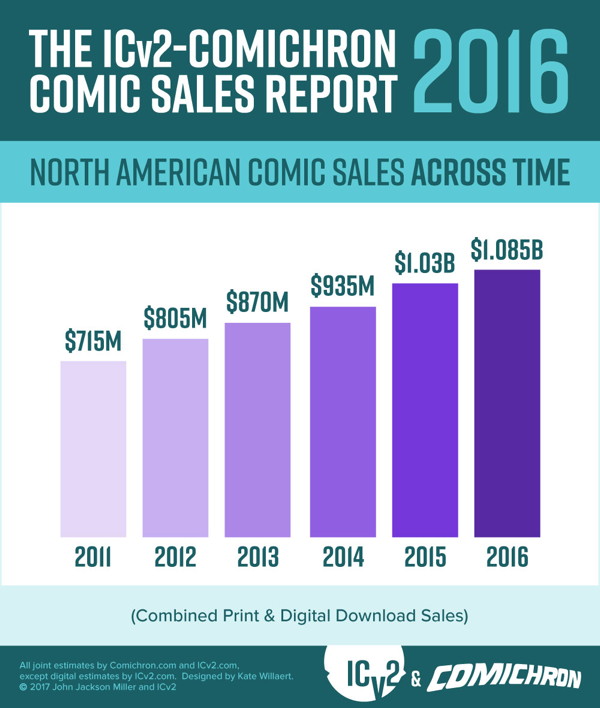
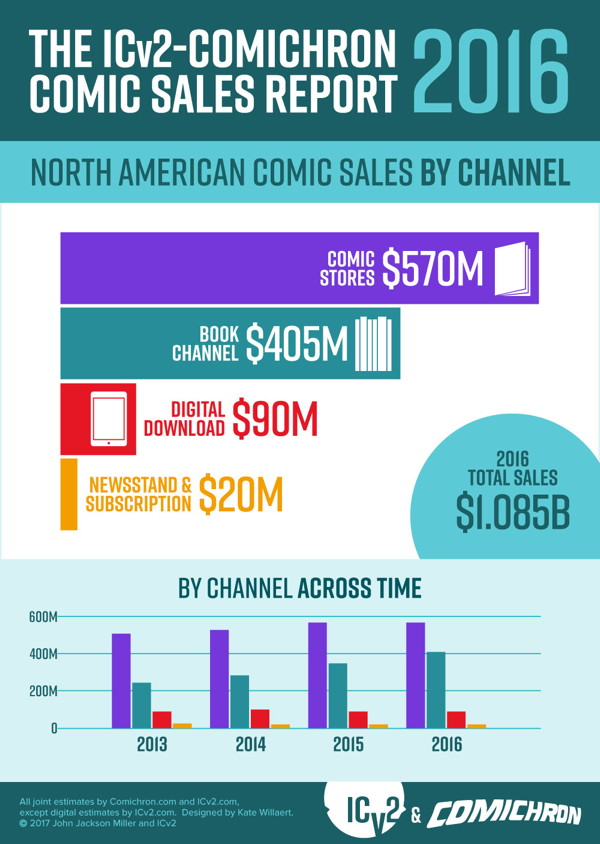
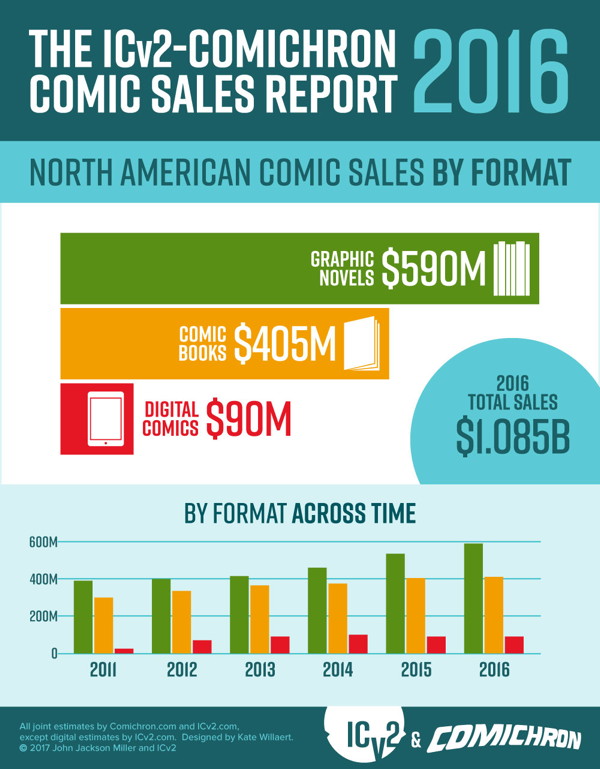
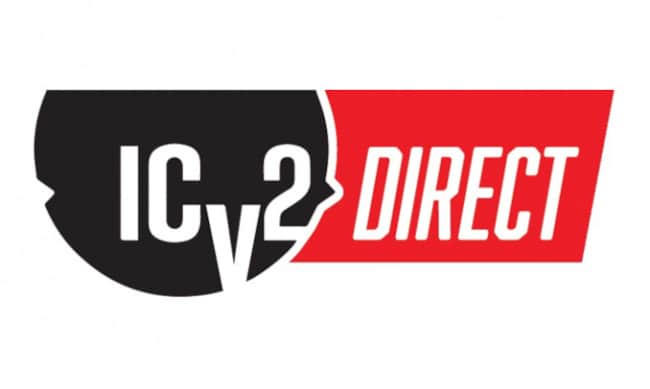
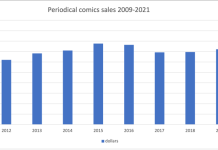




Nice graphics. It will be interesting to know the results in unit, as price probably went up a bit in 2016.
Thanks! The full report is at http://comichron.com/yearlycomicssales/industrywide/2016-industrywide.html, where there are links to get to the previous three years’ reports.
Looks like graphic novels have been outselling comicbooks for quite some time…
Of course, this doesn’t include sales to libraries, or via book fairs, which would probably double the GN data.
Book fairs are in “book channel” — Milton has sources on that. Sizable segment but not gargantuan.
Libraries, no one has, and that probably is quite large.
Specifically for DC and Marvel, I expect their periodical sales *are* higher than their graphic novel sales on a per title basis (with a few exceptions) particularly for new releases.
I’m a decades long manga reader (started high school) and if not for buffet-style Marvel Unlimited and the ever helpful Wikipedia, I wouldn’t have started reading superhero comics. Both DC’s and Marvel’s shared universe (multiverse?) are seemingly impenetrable for new readers. When I read manga (and now indies), I just start from volume 1 and go from there. DC and Marvel? Not so simple.
Single issue prices are also too high (Marvel moreso than DC).
There are over 120,000 libraries in the US and Canada.
Compared to about 3,000 comic shops? Yeah that’s huge. Even if only a small percentage of libraries buy just 1 copy of your book, that can match or even exceed what you sell though the direct market.
Does this data reflect sales to individual enthusiasts or to retail outlets…?
The Direct Market side is sales to retailers — which, as far as calculating publisher sales is concerned, is a sale. Typical comic shop sell-throughs have improved from the glut of the early 1990s, however, and as we note, we do not account for markup. Most of the no-cover-price variants hit our charts as regular-priced issues; there’s simply no way to know what those went for.
That said, another sector of the business we don’t include is aftermarket sales. The last estimate I’d attempted on what eBay was moving annually suggested comics back issues, there and everywhere else, constituted an annual addition of $200 million or more annually — and possibly much more. We’re putting just over 100 million new comics on the shelves annually, but that’s up against an existing inventory that’s in the several billions of issues.
As to the libraries, they’re big as a group but materials budgets vary widely, and in many purchasing is spread across entire systems. It’d be great if there were a way to search them all; WorldCat claims to index 10,000 library catalogs, but a spot-check only found four copies of January’s best-selling graphic novel, so I don’t know what to make of that.
Hi! I love your site and its content! Very informative and fun to read through. It’s good to know graphic novels are on the up — they’re the equivalent of binge watching, I guess, compared to periodicals! One request: Would it be possible for you to increase your body copy weight a little? Reading through reams of numbers that are grey and light is kind of hard. I’m old now, and my eyes are easily tired (jk, I’m 30, but really). Thanks, and keep up the good work!
Is that request to Heidi/ComicsBeat or me and Comichron?
“a spot-check only found four copies of January’s best-selling graphic novel, so I don’t know what to make of that.”
Which GN are you referring to? Your Comichron shows “Batman vol. 1: I Am Gotham” as #1 for January 2017. A search in Worldcat by ISBN shows eight separate entires (ugh, comics & cataloging…), totaling 71 print copies and 346 eBook copies.
Also of note: WorldCat generally does not include any school (K-12) libraries. Most of those nearly 120,000 libraries the U.S. (over 98,000 of them!) are school libraries. (see http://www.ala.org/tools/libfactsheets/alalibraryfactsheet01 for the accounting )
Aha, that’s by ISBN. By title I got four: http://www.worldcat.org/search?qt=worldcat_org_all&q=batman+i+am+gotham
Comments are closed.